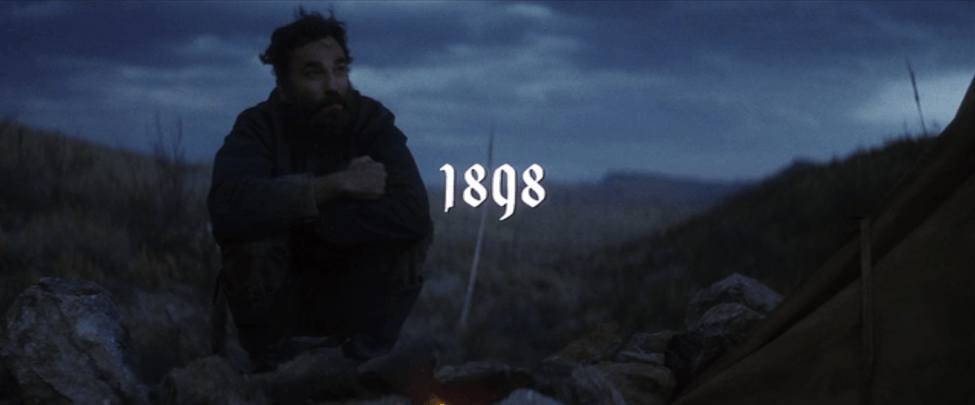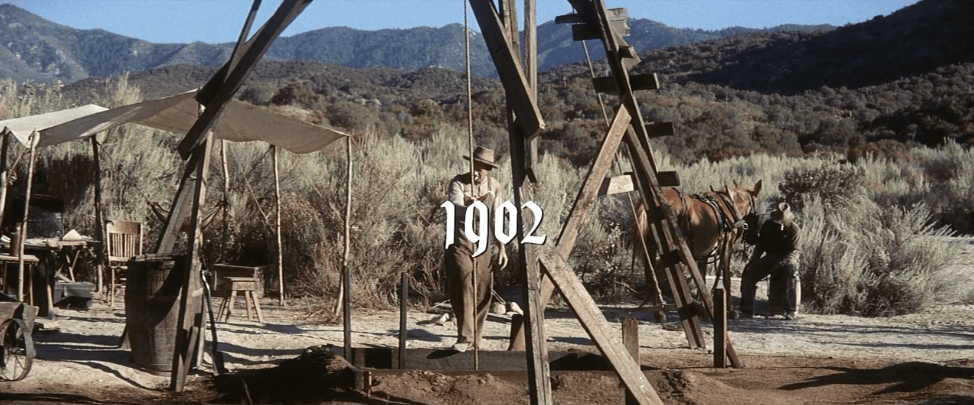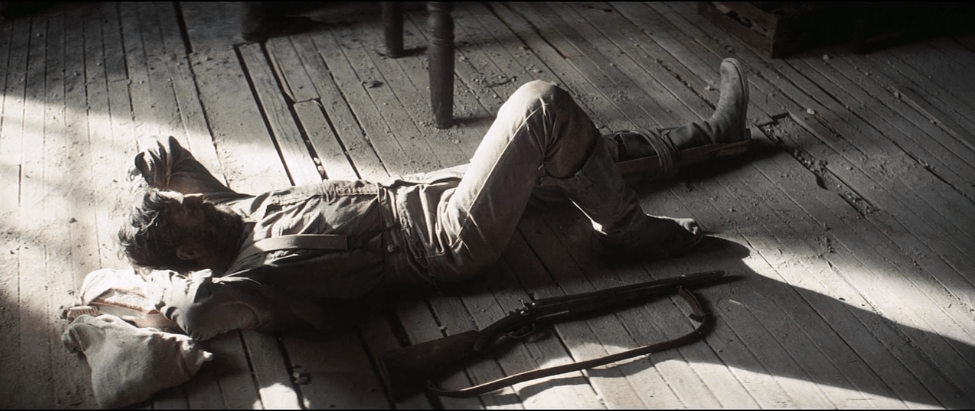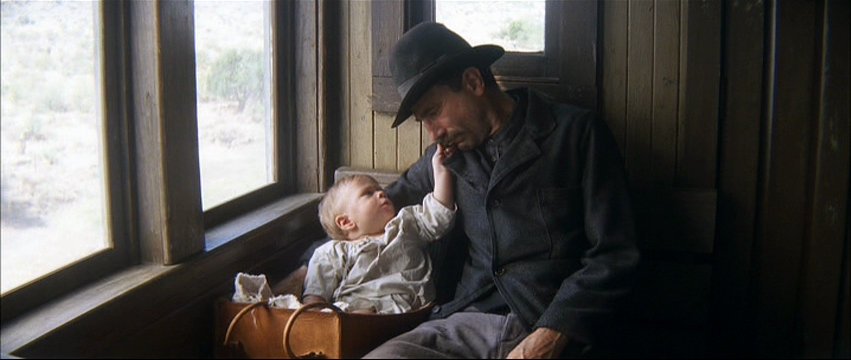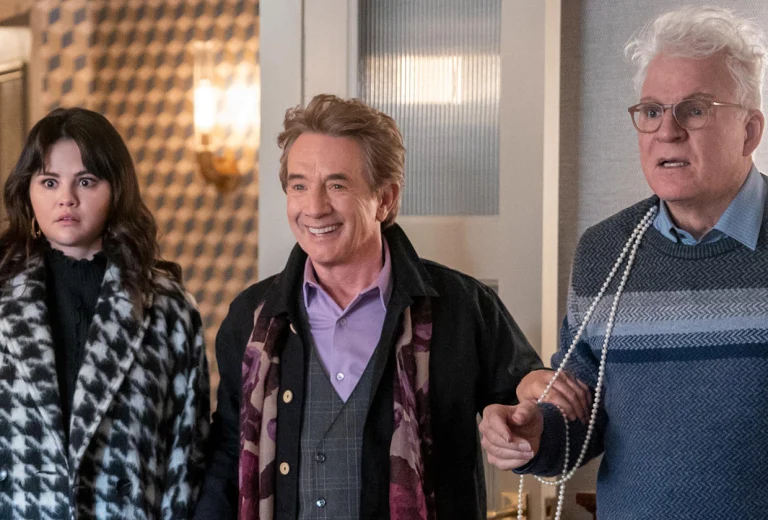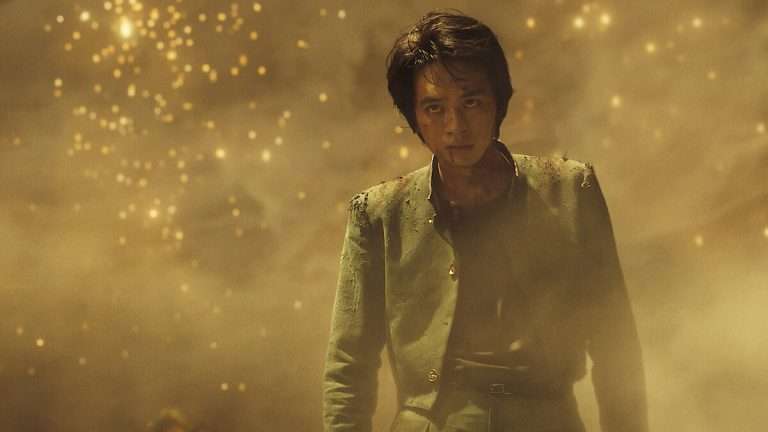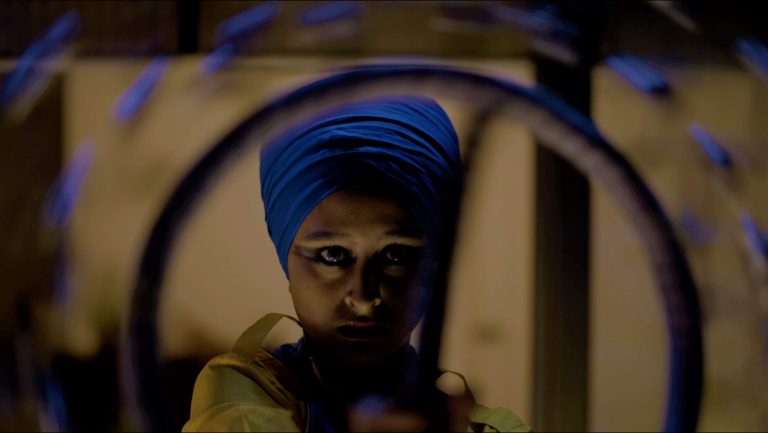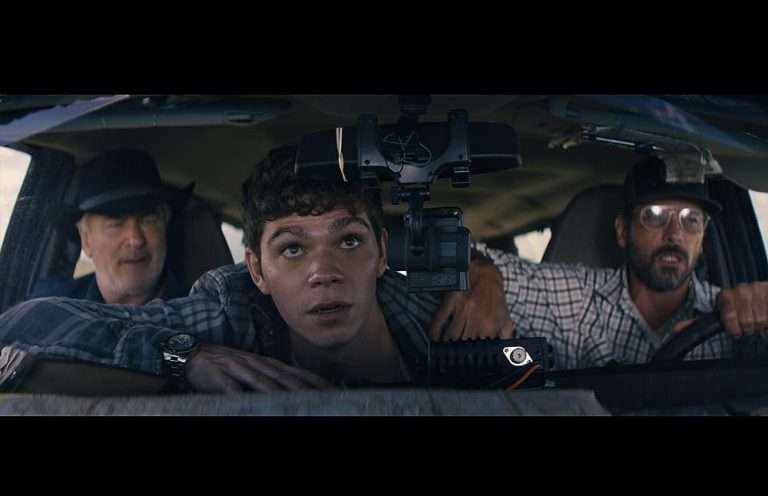Paul Thomas Anderson’s epic character study of a baron anti-hero ‘Daniel Plainview’ (played by legendary actor Daniel Day-Lewis) ‘There Will Be Blood‘ (2007) offers a stupendous visceral experience that is cloaked with the sound of silence punctuated by occasional demonic howls and explosions. The character design, imagery, and plot structure (partly based upon Upton Sinclair’s novel “Oil!” (1927)) derives its influence from prominent classics like Eric Stroheim’s “Greed”, Welles’ “Citizen Kane”, John Huston’s “The Treasure of Sierra Madre” and Coppola’s “Godfather”. But, despite all those finely diffused visual influences, “There will be Blood” remains so unique in its design and execution. The film’s undisputed credibility is engraved in its formidable, almost wordless 14-minute opening sequence. The virtuous piece of film-making we witness in this segment perfectly reveals all we need to know about our protagonist at that stage of his life, and his domain, with the help of few sighs, a piece of disconcerting music and a void of silence.
In this article, I have tried to briefly analyze this stupendous opening sequence.
The rage, domineering and brawny presence of the central character is hinted with an exceptional title font (which is actually called as ‘Kraut-Type-A-Fuck’ – I don’t know the reason for such a name) in the opening credits. As the title is plastered on the screen, there’s an unbearable silence, which is gradually overridden by a dissonant chord. As the intensity of the sound reaches a threshold point, we see a wide sweeping shot of America’s famous Rocky desert mountain range. Then as the unnerving music dies down, the landscape is cut to a dark cave, where a lone man with a pick-axe is hitting at the stone walls and little sparks fly at each of his strikes on the cavern. As darkness enshrouds the landscape, he climbs out of the menacing, physically dangerous hole-in-the-ground to sit huddled before fire, sipping tea. Now, we get the full view at the ‘man’ (and the year 1898 is adverted on-screen, in the same font as title), bearded and untidy, sitting amidst howling wind with the disregard look of a primitive man.
Later, he chisels at the rocks of his silver mine to find a glinting silver stone. He sets out dynamite and climbs out of the narrow mine shaft, but a few minutes later he gets suckered into the deep ground as he accidentally falls in, breaking his leg. When he comes to conscience with few panicked breaths, he immediately picks up one of the loosened rocks, muttering “There she is! There she is”, recognizing the fact that the mother Earth has provided him with its wealthy infant. After stuffing the ore into his pocket, the man slowly climbs out with his twisted leg climbs out and then crawls on the wide space of rugged earth outside as the same intense music of the opening shot is played. Of course, the relentless man is next seen lying at an assay office, waiting for his ore to get processed rather than getting proper medical attention. It’s the image which shows this man’s unbelievable fixation and that he is not another common prospector with the half-witted idea of attaining the American dream. Eventually, in the assay office, we get to know this unspoken man’s name – Daniel Plainview. Now, he is more of an authorized figure and looks less of a primitive man.
Uncertainty and accidents follow in the next half of the opening part. The year is now 1902, where well-groomed Plainview and his expanding team of miners work tirelessly. He has also become more advanced in his approach to mining as we see him sketching complex pulley systems. The sketch is brought to reality and the small crew accidentally strikes oil, instead of silver. The jubilation of coming across this viscous liquid is pretty evident on Plainview’s face, but what we hear is the same ominous music, hinting at how the character’s relentless pursuit’s going to pave a path to greed and ruthlessness. The celebratory attitude to veers down as the men once again tirelessly shovel out the oil. One of the miners marks the forehead of his infant, sitting near the little pond of oil. A piece of mining equipment breaks and falls down the hole, instantly killing the infant’s father, while not injuring Daniel, working in the same pit.
It shows how obsessed he is to show disregard for his own safety and how he treats workers as sentient tools – two vital elements that drive Daniel Plainview’s journey as an oil baron. With a placid emotion, he looks at the crying child in the basket. His cluelessness in looking after a child could be obviously understood by the way he gives the baby, a taste of alcohol. However, there is a hint of love by the manner with which he soothes the little one. Then, we see the last and brilliant shot of the opening segment, where Daniel is sitting next to the baby on a train. IN what happens to be the film’s most tender moment, the baby touches Daniel’s face, showing him what is unadulterated love. Or maybe it is the moment that brings Daniel, the thought of how ‘family’ is important to gain trust in business. And, as this image lingers, words are spoken; words Daniel Plainview speaks in 1912, which finally confirms to us that an order has been established. An act of speech fully inhabits the visual space, previously occupied by the dream-like, abstract images.
These opening sequences of “There will be Blood” ingrain the nature of the story as well as that of a primary character. In these first few minutes, life-changing events (things that forward the plot) happen in a closed or claustrophobic space, which is a pattern that could be absorbed throughout the movie. The central line capitalist figure, in fact, doesn’t achieve much when he is placed alongside the rough, outer terrain. All his decisions are taken indoors, while at outside he simply wanders, performing his regular chores and also fails at times (for example, the flawlessly executed derrick explosion scene). The way director Anderson frames the shot, while Daniel Plainview signs up his name at the assay office, subtly indicate the character’s misanthropic outlook on the world. Critics see this contrast in events, happening in the outer and inner terrain of the narrative, from the opening segment, as Paul Anderson’s way of circumventing the expectations of a grand, epic movie (where key events always materialize in sprawling landscapes).
Although director Anderson is known for his cinematic influences derived from Robert Altman, Martin Scorsese and John Cassavetes, the opening sequence of ‘Blood’ is often compared with the ‘Dawn of Man’ sequence in Kubrick’s “2001: A Space Odyssey”. The video essay titled ‘The Dawn of Blood’ (made by independent digital filmmaker Nelson Carvajal) fascinatingly makes a case of how Anderson had channelled Kubrick’s astounding visualization into the introductory segment of ‘Blood’. The comparative images imply on the primal nature of human beings and also on its frailty upon the discovery of new things (a monolith in ‘2001’; a precious resource in ‘Blood’). Another significant element that cements the observation made in the video essay is the use of discomfiting music in both these films (Gyorgy Ligeti’s “Requiem” in ‘2001’; Jonny Greenwood’s volatile score in ‘Blood’). Finally, the authenticity and engrossing nature of Paul Anderson’s introductory sequence wouldn’t have appeared prodigious, if not for the organic manner with which Day-Lewis embodies the ‘man-who-sees-worst-in-people’.
The opening segment of “There will be Blood” remains a showcase of a film-maker’s admirable quality that sets in motion the narrative and character development with no dialogues.

